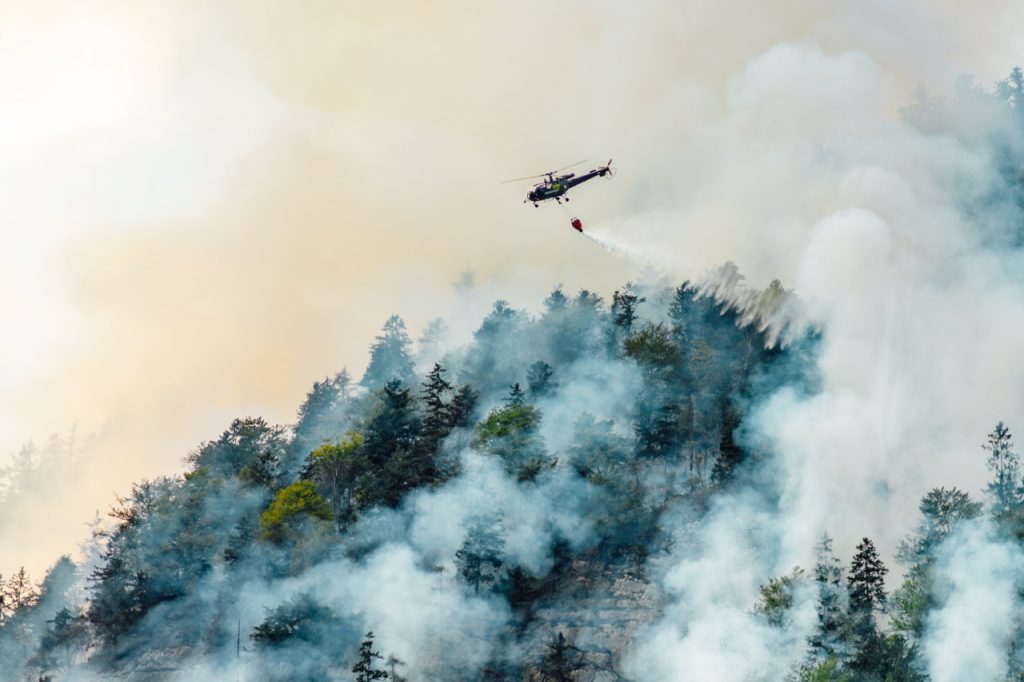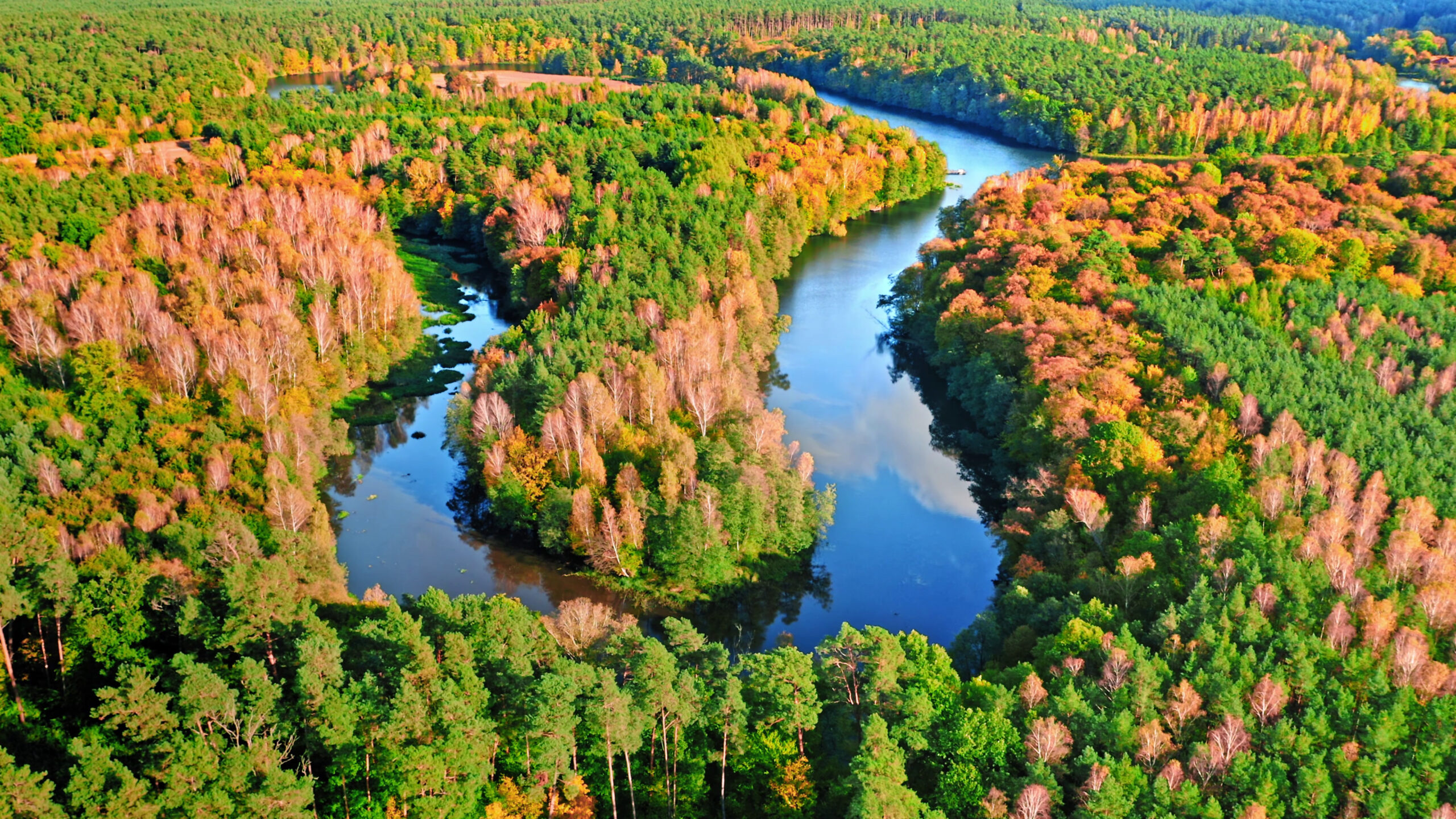Dieser Beitrag ist auch verfügbar auf:
Deutsch
How forest fires behave
A streak of fire up to two meters wide works its way across the landscape, driven by the wind. A charred gray surface remains behind it. It begins with a fire source, the source of the fire. At first, the flames grow evenly around this seat of fire.
Because the flames need oxygen, they orient themselves in the direction from which the most oxygen is flowing. When the wind picks up, it pushes the flames forward like a fire front. These flanks of the fire expand as it progresses. The charred area left behind expands.
According to the Baden-Württemberg Forest Research Institute, about 75 percent of forest fires in Germany are ground fires, also known as wildfires. Their flames consume dead wood, brush and litter. As a result, ground fires produce light gray smoke and can be seen from a distance. They move through nature at an average speed of 500 meters per hour.
Once the tree tops catch fire, the fire becomes almost unstoppable
Under certain conditions, near-ground wildfires can develop into full-blown forest fires. This means that the flames flicker up the trees and set them ablaze. This is why experts call it a crown fire. In the treetops, the low-oxygen smoke dissipates quickly, and the oxygen-rich air above the forest feeds the flames. That is why forest fires can spread up to 1800 meters per hour.
Wie der Klimawandel unseren Wald verändert
Not all forest fires have clear causes
According to the German Federal Ministry of Food and Agriculture, the cause of most fires in recent years is unknown. The BML collects
nationwide statistics on forest fires from data provided by the federal states. The most common known cause lately has been negligence.
This includes agricultural or industrial activities that can lead to forest fires. Electrical cables or timber harvesting can also be the reason. The German Federal Ministry of Food and Agriculture cites the general public as the most common cause of negligently started forest fires in 2018. Campers, hikers and children often behave carelessly, resulting in forest fires.
Climate change and monocultures increase the risk of forest fires
In addition, conditions for fires have improved with the growing climate crisis. Weather extremes and drought are accelerating fires, as is modern agriculture. Stable ecosystems of trees and other plants have been replaced by high-yield monocultures.
Row after row of trees are grown so that they can be felled as quickly as possible to make a profit from the timber. The trees are not always able to cope with the climatic conditions of the region: They are susceptible to disease, or their roots do not go deep enough into the ground to reach groundwater reservoirs.
Other forest plants, such as mosses and ferns, also struggle in monocultures. They eventually become barren and dry. As a result, a spark in the summer in a monoculture turns into a fire more quickly than in a healthy mixed forest.







